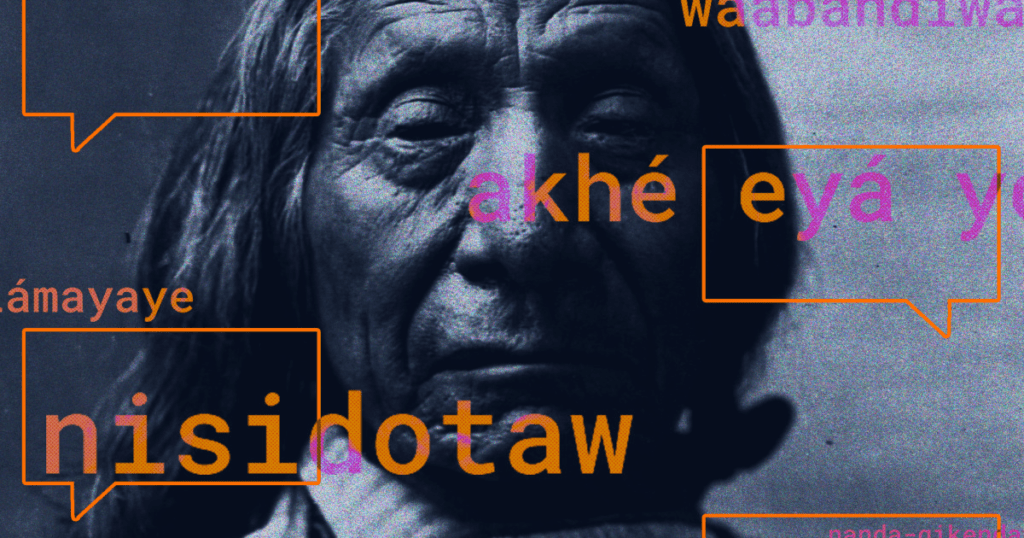Reviving Indigenous Languages Through AI: A Race Against Time
Did you know that every two weeks, an Indigenous language slips away as its last speaker passes on? With around 4,000 Indigenous languages worldwide, the urgency for preservation has never been greater. Michael Running Wolf, founder of Indigenous in AI, has a vision to stem this tide. He warns, “Within the next five to ten years, we’ll lose most of the Native American languages in the U.S.”
Culturally Grounded AI: Fighting Language Loss
Running Wolf has dedicated his life to this battle against language extinction. He leads First Languages AI Reality, an initiative created in collaboration with Mila-Quebec Artificial Intelligence Institute, which focuses on building speech recognition models for over 200 endangered Indigenous languages across North America.
However, there’s a significant challenge: there aren’t enough Indigenous computer scientists who understand both the tech and the cultural nuances necessary for these preservation projects. “Indigenous scientists respect the data itself,” Running Wolf emphasizes. This data, which includes deeply personal and culturally significant information, deserves careful handling, especially considering it may come from speakers who have passed away.
Currently, Running Wolf notes, there are only about a dozen Indigenous AI scientists in North America, with only one or two Indigenous Ph.D.s graduating in AI and computer science each year. Indigenous peoples represent less than 0.005% of the tech workforce in the U.S. and hold a mere 0.4% of bachelor’s degrees in computer science annually. The numbers paint a stark picture: in 2022, Native-founded companies received only 0.02% of total venture capital funding.
Thankfully, a small but determined group of Indigenous engineers is carving their path. Initiatives like IndigiGenius, Tech Natives, and the Wihanble S’a Center for Indigenous AI are training Native American, Alaska Native, and Native Hawaiian students to integrate traditional knowledge with technological skills, ensuring that Indigenous cultures aren’t merely recorded but actively preserved.
Cultivating the Next Generation of Technologists
One such promising talent is Kyra Kaya, a young student at Yale studying computer science. Kaya, one of the countless beneficiaries of Tech Natives’ training programs, aims to build an AI tool honoring her Native Hawaiian grandmother. “Many Native Hawaiians lack access to technology,” she explains. By feeding her program Hawaiian Pidgin English phrases—often regarded as a ‘lesser language’—Kaya hopes to reshape how it’s viewed while preserving the voices of her family.
“AI and tech can either uplift or silence marginalized groups,” Kaya underlines, highlighting the significant role Indigenous people should have in shaping these industries.
In South Dakota, efforts are being made to spark interest in tech among younger generations through programs like IndigiGenius’ Lakota AI Code Camp. This camp invites Native teens to spend three weeks creating an app that documents Lakota culture, enhancing both their tech skills and cultural pride.
With only 67% of Native students having access to computer science courses—lower than any other demographic—IndigiGenius is also training high school teachers nationwide to develop culturally relevant computer science classes. “We’re working to make AI education culturally relevant,” says Executive Director Andrea Delgado-Olson.
Beyond Language: Cultural Preservation Through AI
AI isn’t just preserving languages; it’s also helping connect Indigenous youth with their cultural roots. Madeline Gupta, a Yale student of Chippewa descent, is creating a virtual reality experience allowing Native youth to “visit” their traditional lands. After capturing 3D spatial videos and audio stories from elders, Gupta’s project aims to bridge the gap for those disconnected from their heritage due to historical displacements.
Additionally, artists like Suzanne Kite are exploring the intersections of AI and Indigenous storytelling. At Bard College’s Wihanble S’a Center for Indigenous AI, Kite uses machine learning to transform her dreams—rich in cultural history—into visual art, emphasizing an ethical approach to creation that honors her roots.
Looking Ahead: A Hopeful Future
While many Indigenous AI initiatives are still emerging, Running Wolf remains hopeful that in a decade or two, much of this work will become unnecessary, as revived languages foster new generations of Native speakers. “I hope this technology will be remembered as an artifact of a troubled time,” he says, embodying the determination to bring forth a brighter future.
In the ever-evolving landscape of AI, embracing Indigenous perspectives could be the key to ethical tech development. The success of these initiatives demonstrates that technology can uplift and preserve marginalized cultures, creating a more inclusive digital world for everyone.
The AI Buzz Hub team is excited to see where these breakthroughs take us. Want to stay in the loop on all things AI? Subscribe to our newsletter or share this article with your fellow enthusiasts.




